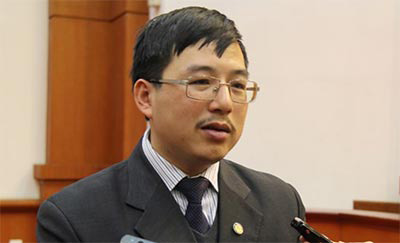|
MoF leader explains
equitisation-boosting measures
The Vietnamese government is taking
various measures to boost sluggish equitisation and achieve the target of 432
equitised enterprises by the end of 2015.
Deputy director Dang Quyet Tien from the Ministry of
Finance’s Corporate Finance Department shares the VIR about what exactly
these measures are and what specifically they are planned to do.
Could you summarise the results of
state-owned enterprises’ equitisation in the first half of this year?
The results were below expectations. In the first half
of this year 38 enterprises were equitised, 138 enterprises set up steering
committees for equitisation but have not yet implemented, and 135 enterprises
have yet to make any significant progress.
The Steering Committee for Enterprise Innovation and
Development [SCEID] has been collaborating with the ministries, branches and
provincial people’s committee to supervise the implementation and tackle
challenges arising during the equitisation process to boost its speed and
effectiveness.
As such, the SCEID has required 159 enterprises to
produce a reliable valuation within this year’s third quarter to complete
approval of their equitisation plans by the end of this year.
For enterprises that have not yet established a
steering committee for equitisation, within the third quarter they must work
to establish such a committee and start the valuation process to submit
results by the second quarter of next year and to approve their equitisation
plans by the third quarter 2015.
Who will be responsible if the
equitisation process does not achieve the desired results you mentioned
before?
Deputy Prime Minister Vu Van Ninh, head of the SCEID,
has chaired regular meetings with relevant departments to ensure equitisation
goes forward and to promptly handle all problems and propose suitable
solutions.
If enterprises fail to implement equitisation as per
the plan, their leaders will be held responsible and they may be removed from
their positions.
The SCEID will identify which enterprises are moving
slowly as well as the cause of the delays. The Prime Minister has affirmed
that the heads of such enterprises will be removed if they don’t achieve
progress.
As proposed by the Ministry of
Finance, SOEs that do not fulfil the requirements for an IPO will instead be
transformed into joint stock companies with a diversified shareholder
structure. Is this just a formality?
Demand on the stock market is still limited, while the
number of enterprises slated for IPOs and equitisation is quite high. This
could lead to unsuccessful share offers. In this context, if the policy is
that firms must hold an IPO at all cost, it could result in low share prices
and even capital losses.
Therefore, the option to transform SOEs into joint
stock companies is aimed at improving the quality of management and
transparency to prepare for a later IPO.
The State Securities Commission is implementing
measures to increase the attractiveness of IPOs and improve demand on the
stock market. If these are successful, IPOs will be more frequent and more
successful.
These steps should boost the equitisation process and
help bring more added value to state capital while avoiding an overabundance
of supply on the stock market.
VIR
|
Thứ Sáu, 29 tháng 8, 2014
Đăng ký:
Đăng Nhận xét (Atom)

Không có nhận xét nào:
Đăng nhận xét